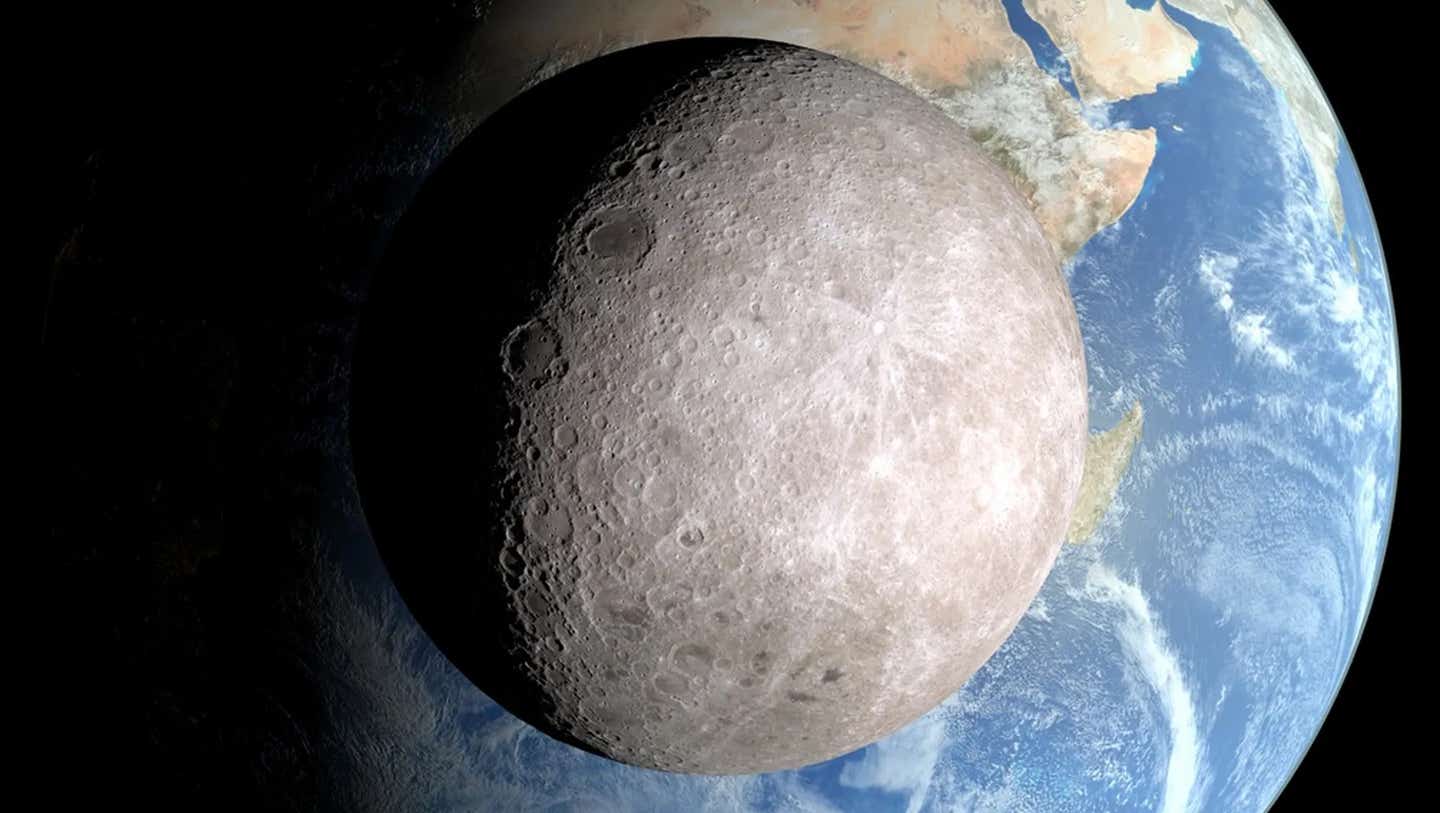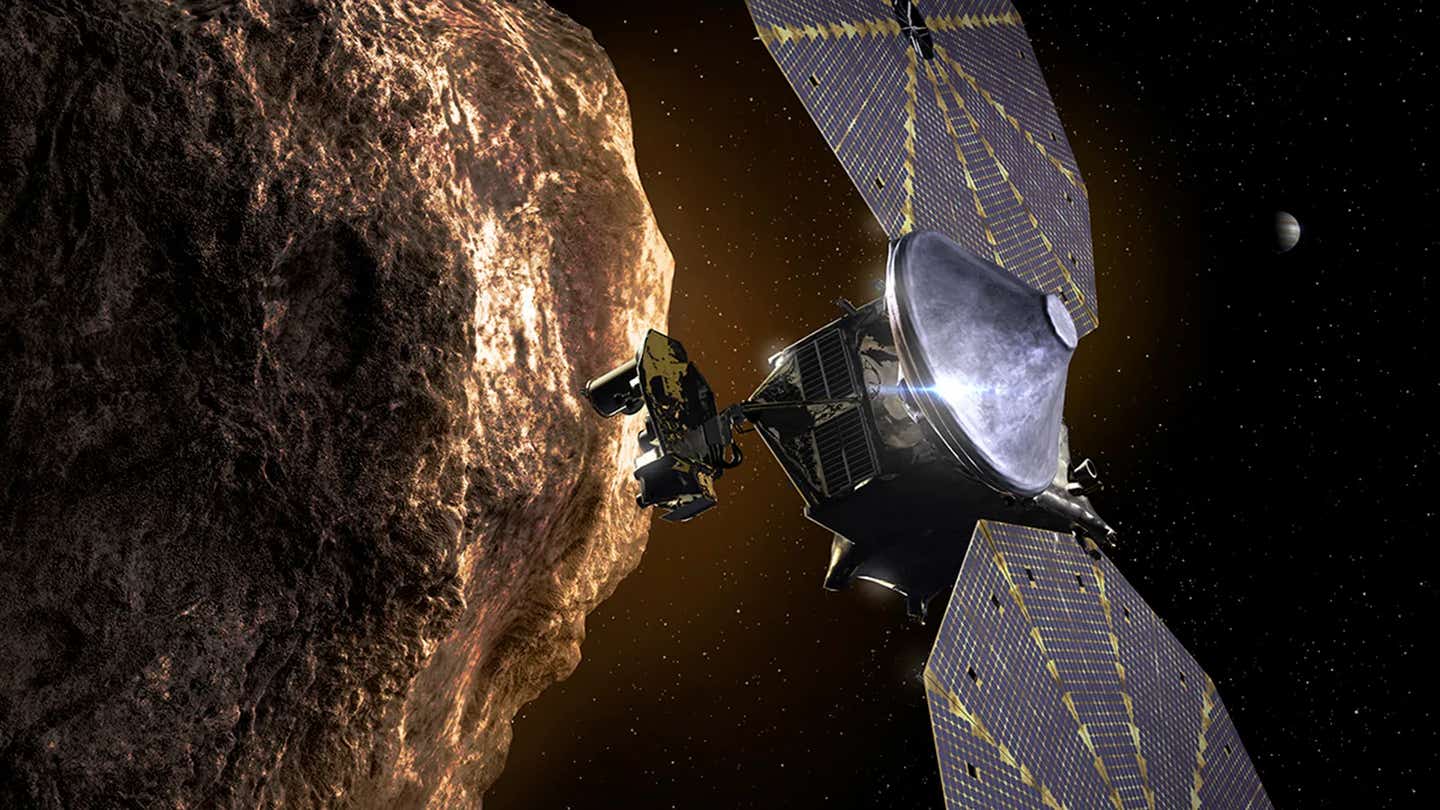Scientists find ‘hidden structures’ buried deep beneath the dark side of the moon
The moon, our nearest neighbor in space, has fascinated people and inspired our creativity for as long as we can remember.

The moon, our nearest neighbor in space, has fascinated people and inspired our creativity for as long as we can remember. It's been a constant theme in art, stories, and science, always keeping an air of mystery. But now, this month, we have uncovered more about the moon's complex geological history that spans billions of years.
Thanks to China's space program, we are beginning to understand the moon's history better. The Chinese National Space Administration (CNSA) launched a groundbreaking mission in 2018 with the Chang’e-4 lander. This was the first spacecraft to land on the moon's far side, often called its "dark side."
In the years since its historic landing, Chang’e-4 has been diligently capturing vivid images of lunar impact craters while extracting invaluable mineral samples. These endeavors have illuminated the structures embedded within the top 1,000 feet of the moon’s surface.
Earlier this month, the world waited with bated breath as the Chang’e-4’s discoveries were unveiled. The findings, meticulously documented in the Journal of Geophysical Research: Planets, provide a panoramic view into the geological layers that compose the top 130 feet (40m) of the lunar surface. Comprising dust, soil, and fractured rocks, these layers hold tales of cataclysmic events and evolving landscapes.
A significant revelation from the Chang’e-4's analysis was the identification of a crater, formed by the violent collision of a large object with the moon. This groundbreaking discovery was co-led by Jianqing Feng, a renowned astrogeological researcher at the Planetary Science Institute in Tucson, Arizona.
Venturing deeper, Feng and his team uncovered a series of five distinct layers of lunar lava. This ancient lava, spanning vast areas of the landscape, dates back billions of years.
Related Stories
But how did the moon come to be?
Experts broadly concur that the moon was formed around 4.51 billion years ago. A cataclysmic event involving a Mars-sized object colliding with Earth led to a fragment breaking away, which eventually coalesced to form the moon. The subsequent 200 million years witnessed the fledgling moon being repeatedly assailed by space debris, etching its surface with myriad cracks.
Feng elucidated on this period, drawing parallels with Earth. "Much like our planet, the moon’s mantle once harbored pockets of molten magma," he noted. This magma, seizing the opportunity presented by the moon’s freshly minted cracks, reached the surface in explosive volcanic events.
Yet, the Chang’e-4 data presented a curious pattern. As the volcanic rock layers neared the moon's surface, they progressively thinned out. Feng poignantly remarked on this finding: "[The moon] was slowly cooling down and running out of steam in its later volcanic stage. Its energy became weak over time."
A prominent belief in the scientific community is that the moon’s volcanic activity ceased between a billion and 100 million years ago. This has led many to label it as "geologically dead." Contrary to this, Feng and his fellow researchers hypothesize the existence of magma reservoirs lurking deep beneath the moon's crust.
The journey of exploration is far from over for Chang’e-4, and Feng is optimistic about the future. "We are standing on the threshold of an era of groundbreaking lunar mapping," he expressed, hinting at even more revelations yet to come.
This monumental endeavor by the CNSA has not only amplified our understanding of the moon but also stands as a testament to human curiosity, perseverance, and the insatiable quest for knowledge. As we look up at the night sky, the moon's glow might just seem a little brighter, warmed by the stories we now share with it.
Facts about the dark side of the moon
The dark side of the moon is often misunderstood. It is not actually dark, but rather it is the side of the moon that never faces Earth. This is because the moon is tidally locked to Earth, meaning that it rotates on its axis at the same rate that it orbits Earth. As a result, the same side of the moon is always facing Earth.
Here are some facts about the dark side of the moon:
It is not actually dark. The dark side of the moon receives just as much sunlight as the side that faces Earth.
It is more heavily cratered than the side of the moon that faces Earth. This is because the dark side of the moon is not protected by Earth's magnetic field, which helps to deflect meteoroids and asteroids.
The dark side of the moon is home to a number of large lunar craters, including the South Pole-Aitken basin, the largest known impact crater in the Solar System.
The dark side of the moon is also home to a number of other interesting features, such as the Ocean of Storms, a large dark plain caused by ancient lava flows.
The dark side of the moon has been explored by a number of spacecraft, including the Soviet Luna probes and the American Apollo program.
Here are some additional facts:
The dark side of the moon is also known as the far side of the moon, the hidden side of the moon, and the averted side of the moon.
The first spacecraft to photograph the dark side of the moon was the Soviet Luna 3 probe in 1959.
The first humans to see the dark side of the moon were the crew of Apollo 8 in 1968.
The dark side of the moon has been the subject of much speculation and conspiracy theories over the years. Some people believe that it is home to a secret alien base or a lost human civilization. However, there is no scientific evidence to support these claims.
Note: Materials provided above by The Brighter Side of News. Content may be edited for style and length.
Like these kind of feel good stories? Get the Brighter Side of News' newsletter.
Joseph Shavit
Head Science News Writer | Communicating Innovation & Discovery
Based in Los Angeles, Joseph Shavit is an accomplished science journalist, head science news writer and co-founder at The Brighter Side of News, where he translates cutting-edge discoveries into compelling stories for a broad audience. With a strong background spanning science, business, product management, media leadership, and entrepreneurship, Joseph brings a unique perspective to science communication. His expertise allows him to uncover the intersection of technological advancements and market potential, shedding light on how groundbreaking research evolves into transformative products and industries.



